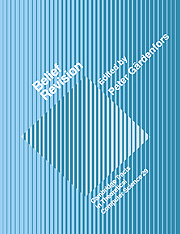Book contents
- Frontmatter
- Contents
- Belief revision: An introduction
- Reason maintenance and belief revision: Foundations versus coherence theories
- Syntax based approaches to belief revision
- A dyadic representation of belief
- On the logic of theory change: More maps between different kinds of contraction functions
- Belief change and possibility theory
- On the difference between updating a knowledge base and revising it
- Planning from first principles
- Autonomous belief revision and communication
- Conditionals and knowledge-base update
- Index
On the difference between updating a knowledge base and revising it
Published online by Cambridge University Press: 21 September 2009
- Frontmatter
- Contents
- Belief revision: An introduction
- Reason maintenance and belief revision: Foundations versus coherence theories
- Syntax based approaches to belief revision
- A dyadic representation of belief
- On the logic of theory change: More maps between different kinds of contraction functions
- Belief change and possibility theory
- On the difference between updating a knowledge base and revising it
- Planning from first principles
- Autonomous belief revision and communication
- Conditionals and knowledge-base update
- Index
Summary
INTRODUCTION
Consider a knowledge base represented by a theory ψ of some logic, say propositional logic. We want to incorporate into ψ a new fact, represented by a sentence μ of the same language. What should the resulting theory be? A growing body of work (Dalal 1988, Katsuno and Mendelzon 1989, Nebel 1989, Rao and Foo 1989) takes as a departure point the rationality postulates proposed by Alchourrón, Gärdenfors and Makinson (1985). These are rules that every adequate revision operator should be expected to satisfy. For example: the new fact μ must be a consequence of the revised knowledge base.
In this paper, we argue that no such set of postulates will be adequate for every application. In particular, we make a fundamental distinction between two kinds of modifications to a knowledge base. The first one, update, consists of bringing the knowledge base up to date when the world described by it changes. For example, most database updates are of this variety, e.g. “increase Joe's salary by 5%”. Another example is the incorporation into the knowledge base of changes caused in the world by the actions of a robot (Ginsberg and Smith 1987, Winslett 1988, Winslett 1990). We show that the AGM postulates must be drastically modified to describe update.
The second type of modification, revision, is used when we are obtaining new information about a static world.
- Type
- Chapter
- Information
- Belief Revision , pp. 183 - 203Publisher: Cambridge University PressPrint publication year: 1992
- 217
- Cited by

